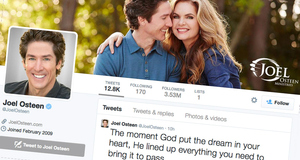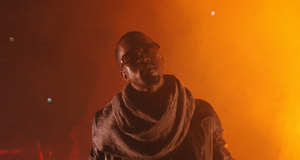From Elon Journal of Undergraduate Research in Communications VOL. 4 NO. 1Social Media and Politics: Twitter Use in the Second Congressional District of VirginiaIII. MethodAs Hampton Roads, the 2nd Congressional District of Virginia, is one of the top-most regions saturated with political advertisements during this upcoming congressional election, this study analyzed the congressional Twitter strategies of this district’s Republican incumbent Scott Rigell and Democratic candidate Paul Hirschbiel. Content analysis is described as a means of “sorting messages into different categories according to some set of classification criteria” (Rosenberry and Vicker, 2009). This methodology was an effective way of analyzing Twitter user accounts, sorting through the user’s mass amounts of posts, and organizing them in a clear, concise manner. The aim of using a content analysis approach was to attain a big picture understanding of a phenomenon by looking at the underlying concepts or categories describing the phenomenon (Elo and Kyngas, 2007). Its efficient coding methodology allows for a swift analysis of information. Data Gathering In order to conduct this content analysis, the researcher collected the 200 most recent posts, or tweets, from both Congressional candidates-incumbent Scott Rigell and candidate Paul Hirschbiel. For most congressional Twitter accounts, the number of tweets by each candidate is dependent on how long they have used Twitter (Golbeck, Grimes, and Rogers, 2010). This was the case with Rigell, who was an early adopter of Twitter and had gained a following throughout his past term in Congress. With this in mind, only the most recent 200 tweets from each candidate’s user account were evaluated. The tweets were analyzed to provide insight into the content and types of posts Rigell and Hirschbiel were producing. Coding Each tweet was classified into as many classes as was appropriate. The classes for this coding scheme were developed based on previous research (Aharony, 2012, and Golbeck et al., 2010) in addition to using a clustering approach, creating new categories whenever a main emerging topic did not match any existing categories. Classification labels and descriptions were drawn from the methods section of Golbeck et al.’s research conducted in 2010. DC -Direct Communication: A message directed at a specific person with the @id convention. Direct Communication was divided into the following two mutually exclusive subclasses:
PM -Personal Message: These are non-business oriented messages or notes, such as holiday greetings or other personal sentiments. Activities: A message reporting on the candidate’s activities. This was divided into two mutually exclusive subclasses:
IN -Information: This code describes a message that provides a fact, opinion, link to an article, position on an issue, or resource. RA -Requesting Action: When a candidate requests constituents to take some action like signing a petition or voting, the message is coded this way. FU -Fundraising: Messages occasionally ask for donations and contributions, and were coded as fundraising. Not all tweets had one code; in fact some fit into two or even three categories. Once coded, the most popular categories from Rigell’s tweets were compared with those of Hirschbiel’s. The coder started at October 20, 2012, on each candidate’s Twitter feed and proceeded to look back at the past tweets until reaching the 200th post, excluding “reply” tweets. The coding was compiled in an excel spreadsheet and analyzed based on the number of times each tweet fell into each category. The resulting findings provide insight into how the Republican and Democratic candidates distinctly cultivate Twitter to attract voters. IV. FindingsThe goal of the current study was to analyze the tactical strategies and characteristics of incumbent Scott Rigell’s and competitor Paul Hirschbiel’s social media usage of Twitter in the election. To code the content of these tweets, the researcher used a number of categories (as described in the methodology): Internal and External Communication, Personal Message, Official Business, Location or Activity, Information, Requesting Action, and Fundraising. On several occasions, tweets were coded into more than one category. Tweets could be coded in several categories. Overall Twitter Use For congressional candidates, the number of tweets and followers is dependent on how long they have been using Twitter, the frequency at which they post. Congressman Scott Rigell, who was an early adopter of Twitter and has served a term in office, had a total of 1,058 tweets and 3,683 followers as of October 20, 2012. Hirschbiel, his competitor, had a total of 224 tweets and 236 followers on said date. Tweet Types and Content Informational tweets (IN), the majority, accounted for a little more than 30% for both candidates. The vast majority of these Information tweets had links to other articles or resources relevant to their campaign. Information posts often read like mini-press releases (Golbeck, Grimes, and Rogers, 2010). The following sample of tweets provides an accurate snapshot of the type of content posted.
Following these Information posts were Location or Activity posts, used when the candidate was giving updates about meetings, personal activities in the home district, visits with lobbyists, or non-Congressional organizations, or trips. These Location or Activity posts (LA) accounted for about 20% of the candidate’s tweets. Again, the following posts from this category provide a representation of the kind of content found.
However, when Official Business (OB) activity-related posts are added to the Location or Activity tweets, the total number of activity posts takes a shift, and the percentage increases for both parties. Official Business tweets are similar to those shown above, but they are restricted to official business in Congress, including voting, committee meetings, or making speeches on the house floor (Golbeck et al., 2010). For example:
A unique way of embodying both categories, Official Business and Information, can be seen in Hirschbiel’s frequent posts that led his followers to Facebook albums. Often, these posts gave links to images of the candidate at political events and Congressional functions. These messages were coded in Official Business Activity and Information categories since they gave insight into Congressional activity while serving as a resource for information on his political stance based on events attended. Examples of these tweets are as follows,
As seen in FIG 1, Congressman Rigell’s Official Business updates were found increasingly more often than candidate Hirschbiel’s, for a total of 47 tweets (making up 15% of his official business content) vs. Hirschbiel’s 18 tweets (5%). When added together, Rigell’s activity posts make up 37% of his Twitter content. Hirschbiel’s activity posts, official business (OB) and location or activity (LA), total 26%. Rigell and Hirschbiel posted few quotes requesting action (RA) from their followers, both equaling 6%. These posts sent followers to outside sources for volunteering, registering to vote, and applying for various forms of service, as seen in the following tweets. Figure 1: The types of content posted by Congressman Scott Rigell
Divided into two mutually exclusive categories—Internal (IC) and External Communication (EC)—Direct Communication refers to messages directed at a specific person with the @id convention. Direct Communication (DC) posts were in Congressman Rigell’s posts more often than candidate Hirschbiel’s. Rigell posted a combined 14% of tweets that directly communicated with other twitter users; this includes congressman, staff members, friends and constituents. Hirschbiel’s direct communication, however, made up only 5% of his Twitter post content, for a total of 14 tweets directed to other Twitter users. External Communication posts are messages sent directly from the Congressman to another Twitter user outside of Congress. These connections (@) were typically found at the beginning or end of the message as a way of recognizing a constituent. These posts were also coded in other categories including Location or Activity or Official Business.
As seen in the above posts, Hirschbiel used external communication to thank constituents for following his page, as well as recognizing friends who have helped with his campaign. Rigell used this type of post differently, however, communicating (@) with organizations rather than individuals. Internal Communications posts, referring to Congressman to Congressman or Congressman to Congressional staff communication, occurred rarely. Messages tweeted internally looked like:
Making it Personal The most dramatic change in content between Democratic candidate Paul Hirschbiel and Republican Congressman Scott Rigell is in the use of Personal Messages (PM). As seen in FIG 2, Hirschbiel’s personal message posts accounted for more than double the number of Rigell’s. These posts are non-business oriented, more informal messages or notes such as greetings, appreciations, or other personal sentiments. With a total of 28%, Hirschbiel’s personal messages account for the second highest category of his tweets, coming second to information posts (35%). Rigell’s personal messages make up 11% of his posts. Figure 2: The types of content posted by candidate Paul Hirschbiel
As previously mentioned, on several occasions tweets were coded in more than one category. These personal messages often fell into other categories, such as Location or Activity, Official Business, or Information. The following posts provide a snapshot of the kinds of tweets in this category.
Unlike Congressman Rigell’s personal messages, Hirschbiel’s posts often contained references to Facebook albums he had posted from family events. These tweets were coded in Personal Message and Location or Activity categories since they gave followers personal insight into his private activities. An interpretation of this Twitter use is put in the next section.Continued on Next Page » Suggested Reading from Inquiries Journal
Inquiries Journal provides undergraduate and graduate students around the world a platform for the wide dissemination of academic work over a range of core disciplines. Representing the work of students from hundreds of institutions around the globe, Inquiries Journal's large database of academic articles is completely free. Learn more | Blog | Submit Latest in Business & Communications |





















